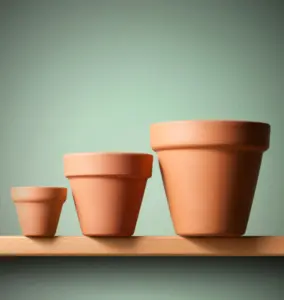
Be sure to select the right size of pots for growing tomatoes in containers – specific types of tomato plants require different pot sizes. In a large (minimum of five-gallon) container, you can successfully grow even a full-size indeterminate tomato plant. Determinate varieties that are bushy, but not very tall, will also fit this size of the pot. They are great for smaller spaces.
Dwarf (tree-type) tomato plants will be suitable for smaller, 2-3 gallon containers that fit comfortably on a small balcony or terrace. Even if you just have a small porch, you can still grow micro dwarfs, which can be grown in 1-2 gallon pots on your window sill. They are tiny but often bear dozens of delicious fruits that are perfect for snacking straight from the vine or used as a delicious base for colorful summer salads.
There are also basket-type varieties, which are ideal for growing in hanging pots and baskets. You can hang them on your porch, or in a small greenhouse if you have one, leaving the floor space for other larger potted plants.
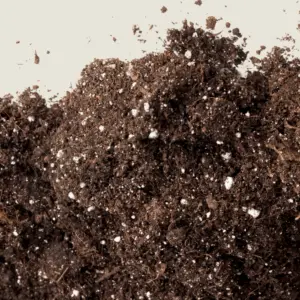
The second rule of growing tomatoes in containers is to use the right choice for the potting soil mixture. The most effective are light, fluffy, ready-to-use mixes, which can be purchased at any nursery. Such mixtures contain properly composed ingredients including a starter dose of fertilizer so that your plants grow beautiful and healthy. Because the soil in the pots is exposed to faster drying, it is good if such a mix contains an additive that allows it to retain moisture longer (e.g. perlite). Poor choices for container growing include heavy, slow-draining ingredients like topsoil, clay, and sand which would compact and hold excess water around the roots.
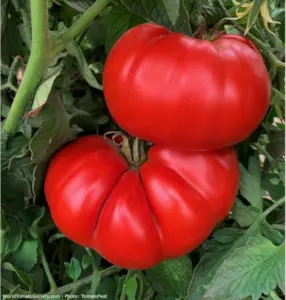
As we mentioned above, the soil in pots (due to the rapid temperature rise) loses moisture much faster. Pay close attention to watering needs because inconsistent watering may cause the fruits to crack (overwatering), wilt (underwatering), or root rot (overwatering). Stressed plants will lose flowers and will not set fruits properly, will grow and yield poorly, and will also suffer from diseases more often. Regular watering helps to avoid nutrient uptake disturbances such as blossom end rot, which occurs when the tomato plants can not absorb calcium properly because of not enough moisture in the soil.
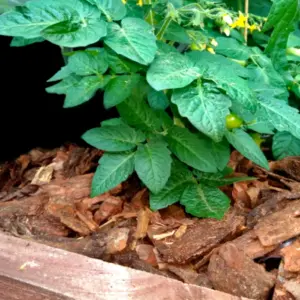
The most important reason to cover the top of the soil in containers with a layer of mulch is to prevent rapid soil dehydration. Mulched soil not only dries out less quickly but also absorbs water more easily during watering, just as a moist sponge absorbs better than a dehydrated sponge. Wood chips, straw, or fine bark prevent the soil from splashing onto the leaves during
watering and the transfer of soil-borne pathogens to your plants. Mulching will also keep the soil cooler during extremely hot periods. This is even more important when the container growing because the soil heats up much faster.
Lastly, mulching aids in the prevention of weeds. A thin layer of mulch makes it
difficult for weed seeds to germinate, and those that manage to germinate are easier to remove.
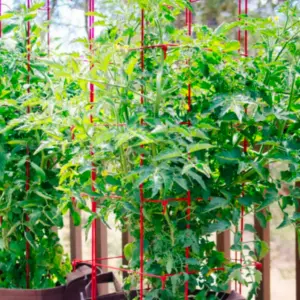
Choose the appropriate support for both the size of the containers and the plants you are planning to grow. Large, indeterminate plants grown in big containers and shorter, bushy indeterminate plants require strong support such as tomato cages. This type of support would work better in containers than staking because of their stability. Smaller plants produce smaller amounts of fruits and grow well-staked. Some of the smallest micro dwarf-type plants require no support at all. It is important to implement your chosen support method right after planting to avoid disturbing the roots when they are larger.
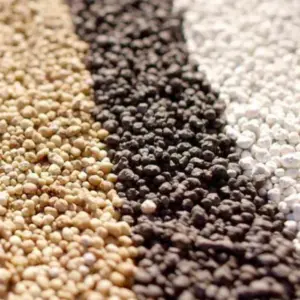
Proper fertilization is one of the most important factors in successfully growing tomatoes in containers. Due to more frequent watering, the nutrients are leached from the potting soil much faster. The roots, limited by the size of the containers, cannot search for nutrients deeper in the ground making it important to provide nutrients regularly.
The most effective way to fertilize tomatoes grown in pots is to use granular multi-component fertilizers formulated specifically for tomatoes and adapted to each plant development phase. Young plants have different demands for individual minerals, macro, and micronutrients that they do during rapid growth, flowering, and fruiting stages. Granular fertilizers slowly dissolve during watering and constantly provide
nutrients to the roots. It’s easy to over-fertilize plants growing in pots for two reasons: the ease of adding too much fertilizer to a small pot and faster-drying soil in the pot, which both increase the concentration of fertilizer in the soil. Fertigation. another effective way to supply nutrients to tomatoes grown in pots requires a little more attention. It involves small doses of fertilizer dissolved in water at each watering. You can also foliar feed tomato plants by spraying the leaves and stems with a water-soluble fertilizer. This is a great way to get extra nutrients quickly. (Read more about fertilizing vegetables here.)
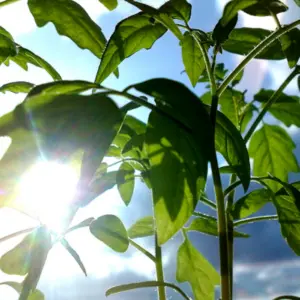
Tomatoes love the sun. They need at least 6 to 8 hours of full sunlight a day to grow fast enough and have enough energy to produce a good yield. One advantage of growing in containers is their mobility – if needed, you can move the container to a sunnier place. Growing on sufficiently sunny terraces, balconies, or porches allows you to enjoy the harvest of delicious fruit throughout the season.
By Dorota Basiura
World Tomato Society Website Content Director
Readers Comments